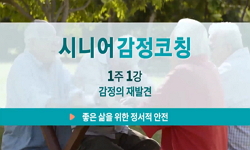ObjectiveaaAnxiety trait, anxiety and depression states have all been reported to increase risks for cardiovascular disease (CVD), possibly through altering cardiac autonomic regulation. Our aim was to investigate whether the relationship between harm...
http://chineseinput.net/에서 pinyin(병음)방식으로 중국어를 변환할 수 있습니다.
변환된 중국어를 복사하여 사용하시면 됩니다.
- 中文 을 입력하시려면 zhongwen을 입력하시고 space를누르시면됩니다.
- 北京 을 입력하시려면 beijing을 입력하시고 space를 누르시면 됩니다.




Linking an Anxiety-Related Personality Trait to Cardiac Autonomic Regulation in Well-Defined Healthy Adults: Harm Avoidance and Resting Heart Rate Variability
한글로보기https://www.riss.kr/link?id=A103572633
-
저자
Lien-Cheng Kao (Tri-Service General Hospital, National Defense Medical Center, Taipei, Taiwan) ; Yu-Wen Liu (Tri-Service General Hospital, National Defense Medical Center, Taipei, Taiwan) ; Nian-Sheng Tzeng (Tri-Service General Hospital) ; Terry B. J. Kuo (National Yang-Ming University) ; San-Yuan Huang (Tri-Service General Hospital) ; Chuan-Chia Chang (Tri-Service General Hospital) ; Hsin-An Chang (Tri-Service General Hospital)

- 발행기관
- 학술지명
- 권호사항
-
발행연도
2016
-
작성언어
English
- 주제어
-
등재정보
KCI등재,SCIE,SSCI,SCOPUS
-
자료형태
학술저널
-
수록면
397-405(9쪽)
-
KCI 피인용횟수
1
- DOI식별코드
- 제공처
-
0
상세조회 -
0
다운로드
부가정보
다국어 초록 (Multilingual Abstract)
ObjectiveaaAnxiety trait, anxiety and depression states have all been reported to increase risks for cardiovascular disease (CVD), possibly through altering cardiac autonomic regulation. Our aim was to investigate whether the relationship between harm avoidance (HA, an anxiety-related personality trait) and cardiac autonomic regulation is independent of anxiety and depression states in healthy adults.
MethodsaaWe recruited 535 physically and mentally healthy volunteers. Participants completed the Beck Anxiety Inventory (BAI), Beck Depression Inventory (BDI) and Tri-dimensional Personality Questionnaire. Participants were divided into high or low HA groups as discriminated by the quartile value. Cardiac autonomic function was evaluated by measuring heart rate variability (HRV). We obtained the time and frequency-domain indices of HRV including variance (total HRV), the low-frequency power (LF; 0.05–0.15 Hz), which may reflect baroreflex function, the high-frequency power (HF; 0.15–0.40 Hz), which reflects cardiac parasympathetic activity, as well as the LF/HF ratio.
ResultsaaThe BDI and HA scores showed associations with HRV parameters. After adjustment for the BDI scores and other control variables, HA is still associated with reduced variance, LF and HF power. Compared with the participants with low HA, those with high HA displayed significant reductions in variance, LF and HF power and a significant increase in their LF/HF ratio.
ConclusionaaThis study highlights the independent role of HA in contributing to decreased autonomic cardiac regulation in healthy adults and provides a potential underlying mechanism for anxiety trait to confer increased risk for CVD.
참고문헌 (Reference)
1 Jordan D, "Vagal control of the heart : central serotonergic(5-HT)mechanisms" 90 : 175-181, 2005
2 Bleil ME, "Trait negative affect : toward an integrated model of understanding psychological risk for impairment in cardiac autonomic function" 70 : 328-337, 2008
3 Frederiks J, "The importance of high-frequency paced breathing in spectral baroreflex sensitivity assessment" 18 : 1635-1644, 2000
4 Li Q, "The Chinese translations of Alcohol Use Disorders Identification Test(AUDIT)in China : a systematic review" 46 : 416-423, 2011
5 Babor TF, "The Alcohol Use Disorders Identification Test: Guidelines for Use in Primary Health Care"
6 Puttonen S, "Temperament, health-related behaviors, and autonomic cardiac regulation: the cardiovascular risk in young Finns study" 78 : 204-210, 2008
7 Battaglia M, "Temperament dimensions explain the comorbidity of psychiatric disorders" 37 : 292-298, 1996
8 Farmer RF, "Temperament and character predictors of depressed mood over a 4-year interval" 26 : 371-381, 2009
9 Asano T, "Temperament and character as predictors of recurrence in remitted patients with major depression : a 4-year prospective follow-up study" 225 : 322-325, 2015
10 Paterniti S, "Sustained anxiety and 4-year progression of carotid atherosclerosis" 21 : 136-141, 2001
1 Jordan D, "Vagal control of the heart : central serotonergic(5-HT)mechanisms" 90 : 175-181, 2005
2 Bleil ME, "Trait negative affect : toward an integrated model of understanding psychological risk for impairment in cardiac autonomic function" 70 : 328-337, 2008
3 Frederiks J, "The importance of high-frequency paced breathing in spectral baroreflex sensitivity assessment" 18 : 1635-1644, 2000
4 Li Q, "The Chinese translations of Alcohol Use Disorders Identification Test(AUDIT)in China : a systematic review" 46 : 416-423, 2011
5 Babor TF, "The Alcohol Use Disorders Identification Test: Guidelines for Use in Primary Health Care"
6 Puttonen S, "Temperament, health-related behaviors, and autonomic cardiac regulation: the cardiovascular risk in young Finns study" 78 : 204-210, 2008
7 Battaglia M, "Temperament dimensions explain the comorbidity of psychiatric disorders" 37 : 292-298, 1996
8 Farmer RF, "Temperament and character predictors of depressed mood over a 4-year interval" 26 : 371-381, 2009
9 Asano T, "Temperament and character as predictors of recurrence in remitted patients with major depression : a 4-year prospective follow-up study" 225 : 322-325, 2015
10 Paterniti S, "Sustained anxiety and 4-year progression of carotid atherosclerosis" 21 : 136-141, 2001
11 Moak JP, "Supine low-frequency power of heart rate variability reflects baroreflex function, not cardiac sympathetic innervation" 4 : 1523-1529, 2007
12 Chang CC, "Sex-specific association between nerve growth factor polymorphism and cardiac vagal modulation" 76 : 638-643, 2014
13 Peirson AR, "Relationship between serotonin and the temperament and character inventory" 89 : 29-37, 1999
14 Cohen H, "Power spectrum analysis and cardiovascular morbidity in anxiety disorders" 128 : 1-8, 2006
15 Ode S, "Neuroticism’s importance in understanding the daily life correlates of heart rate variability" 10 : 536-543, 2010
16 Cloninger CR, "Neurogenetic adaptive mechanisms in alcoholism" 236 : 410-416, 1987
17 Goldstein DS, "Low-frequency power of heart rate variability is not a measure of cardiac sympathetic tone but may be a measure of modulation of cardiac autonomic outflows by baroreflexes" 96 : 1255-1261, 2011
18 Dekker JM, "Low heart rate variability in a 2-minute rhythm strip predicts risk of coronary heart disease and mortality from several causes: the ARIC Study. Atherosclerosis Risk In Communities" 102 : 1239-1244, 2000
19 Damaso EL, "Involvement of central 5-HT7 receptors in modulation of cardiovascular reflexes in awake rats" 1144 : 82-90, 2007
20 Antelmi I, "Influence of age, gender, body mass index, and functional capacity on heart rate variability in a cohort of subjects without heart disease" 93 : 381-385, 2004
21 Kemp AH, "Impact of depression and antidepressant treatment on heart rate variability : a review and meta-analysis" 67 : 1067-1074, 2010
22 Keltikangas-Jarvinen L, "Identifying Cloninger’s temperament profiles as related to the early development of the metabolic cardiovascular syndrome in young men" 19 : 1998-2006, 1999
23 Task Force of the European Society of Cardiology and the North American Society of Pacing and Electrophysiology, "Heart rate variability: standards of measurement, physiological interpretation and clinical us" 93 : 1043-1065, 1996
24 Dishman RK, "Heart rate variability, trait anxiety, and perceived stress among physically fit men and women" 37 : 121-133, 2000
25 Thayer JF, "Heart rate variability, prefrontal neural function, and cognitive performance: the neurovisceral integration perspective on self-regulation, adaptation, and health" 37 : 141-153, 2009
26 Henje Blom E, "Heart rate variability is related to self-reported physical activity in a healthy adolescent population" 106 : 877-883, 2009
27 Yeh TC, "Heart rate variability in major depressive disorder and after antidepressant treatment with agomelatine and paroxetine : findings from the Taiwan Study of Depression and Anxiety(TAISDA)" 64 : 60-67, 2016
28 Malliani A, "Heart rate variability : from bench to bedside" 16 : 12-20, 2005
29 Hsin-An Chang, "Generalized Anxiety Disorder, Comorbid Major Depression and Heart Rate Variability: A Case-Control Study in Taiwan" 대한신경정신의학회 10 (10): 326-335, 2013
30 Huang WL, "Gender differences in personality and heart-rate variability" 209 : 652-657, 2013
31 Shields RW Jr, "Functional anatomy of the autonomic nervous system" 10 : 2-13, 1993
32 Rettew DC, "Exploring the boundary between temperament and generalized anxiety disorder : a receiver operating characteristic analysis" 20 : 931-945, 2006
33 Rosenwinkel ET, "Exercise and autonomic function in health and cardiovascular disease" 19 : 369-387, 2001
34 Wu JS, "Epidemiological evidence of altered cardiac autonomic function in overweight but not underweight subjects" 32 : 788-794, 2008
35 Liu CC, "Effects of estrogen on gender-related autonomic differences in humans" 285 : H2188-H2193, 2003
36 Kemp AH, "Effects of depression, anxiety, comorbidity, and antidepressants on resting-state heart rate and its variability: an ELSA-Brasil cohort baseline study" 171 : 1328-1334, 2014
37 Kuo TB, "Effect of aging on gender differences in neural control of heart rate" 277 : H2233-H2239, 1999
38 Stein PK, "Effect of 21 mg transdermal nicotine patches and smoking cessation on heart rate variability" 77 : 701-705, 1996
39 Chang HA, "Distinguishing bipolar II depression from unipolar major depressive disorder : differences in heart rate variability" 16 : 351-360, 2015
40 Chen TY, "Different patterns of heart rate variability during acute withdrawal in alcohol dependent patients with and without comorbid anxiety and/or depression" 29 : 87-98, 2015
41 Taylor CB, "Depression, heart rate related variables and cardiovascular disease" 78 : 80-88, 2010
42 Kemp AH, "Depression, comorbid anxiety disorders, and heart rate variability in physically healthy, unmedicated patients: implications for cardiovascular risk" 7 : e30777-, 2012
43 Ellis RJ, "Data transforms for spectral analyses of heart rate variability" 44 : 392-397, 2008
44 Chen WJ, "Cloninger’s Tridimensional Personality Questionnaire : psychometric properties and construct validity in Taiwanese adults" 43 : 158-166, 2002
45 Sovio U, "Cloninger’s Temperament dimensions, socio-economic and lifestyle factors and metabolic syndrome markers at age 31 years in the Northern Finland Birth Cohort 1966" 12 : 371-382, 2007
46 Lombardi F, "Clinical implications of present physiological understanding of HRV components" 6 : 245-249, 2002
47 Chang CC, "Brain-derived neurotrophic factor(BDNF)Val66Met polymorphism affects sympathetic tone in a gender-specific way" 47 : 17-25, 2014
48 La Rovere MT, "Baroreflex sensitivity and heart-rate variability in prediction of total cardiac mortality after myocardial infarction. ATRAMI (Autonomic Tone and Reflexes After Myocardial Infarction) Investigators" 351 : 478-484, 1998
49 Ohira T, "Associations of psychosocial factors with heart rate and its short-term variability : multi-ethnic study of atherosclerosis" 70 : 141-146, 2008
50 Hernandez R, "Association of depressive symptoms, trait anxiety, and perceived stress with subclinical atherosclerosis: results from the Chicago Healthy Aging Study (CHAS)" 61 : 54-60, 2014
51 Francis JL, "Association between symptoms of depression and anxiety with heart rate variability in patients with implantable cardioverter defibrillators" 71 : 821-827, 2009
52 Goldberg DP, "Anxious and non-anxious forms of major depression: familial, personality and symptom characteristics" 44 : 1223-1234, 2014
53 Virtanen R, "Anxiety and hostility are associated with reduced baroreflex sensitivity and increased beat-to-beat blood pressure variability" 65 : 751-756, 2003
54 Thayer JF, "A model of neurovisceral integration in emotion regulation and dysregulation" 61 : 201-216, 2000
55 Endicott J, "A diagnostic interview : the schedule for affective disorders and schizophrenia" 35 : 837-844, 1978
동일학술지(권/호) 다른 논문
-
- 대한신경정신의학회
- 우영섭
- 2016
- KCI등재,SCIE,SSCI,SCOPUS
-
- 대한신경정신의학회
- Eun-Jin Cheon
- 2016
- KCI등재,SCIE,SSCI,SCOPUS
-
Decreased Prolidase Activity in Patients with Posttraumatic Stress Disorder
- 대한신경정신의학회
- Süleyman Demir
- 2016
- KCI등재,SCIE,SSCI,SCOPUS
-
Association of CACNA1C Variants with Bipolar Disorder in the Korean Population
- 대한신경정신의학회
- Soojin Kim
- 2016
- KCI등재,SCIE,SSCI,SCOPUS
분석정보
인용정보 인용지수 설명보기
학술지 이력
| 연월일 | 이력구분 | 이력상세 | 등재구분 |
|---|---|---|---|
| 2023 | 평가예정 | 해외DB학술지평가 신청대상 (해외등재 학술지 평가) | |
| 2020-01-01 | 평가 | 등재학술지 유지 (해외등재 학술지 평가) |  |
| 2010-01-01 | 평가 | 등재학술지 선정 (등재후보2차) |  |
| 2009-01-01 | 평가 | 등재후보 1차 PASS (등재후보1차) |  |
| 2007-01-01 | 평가 | 등재후보학술지 선정 (신규평가) |  |
학술지 인용정보
| 기준연도 | WOS-KCI 통합IF(2년) | KCIF(2년) | KCIF(3년) |
|---|---|---|---|
| 2016 | 1.42 | 0.21 | 1.07 |
| KCIF(4년) | KCIF(5년) | 중심성지수(3년) | 즉시성지수 |
| 0.87 | 0.77 | 0.51 | 0.1 |




 KCI
KCI 스콜라
스콜라




